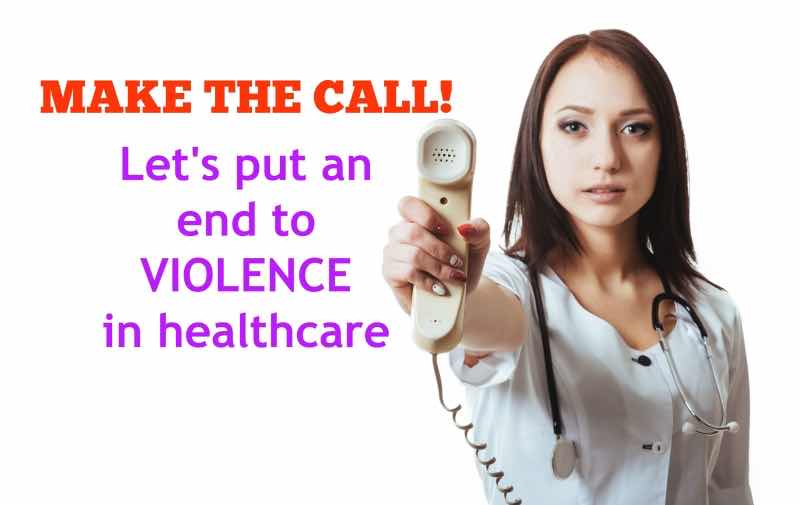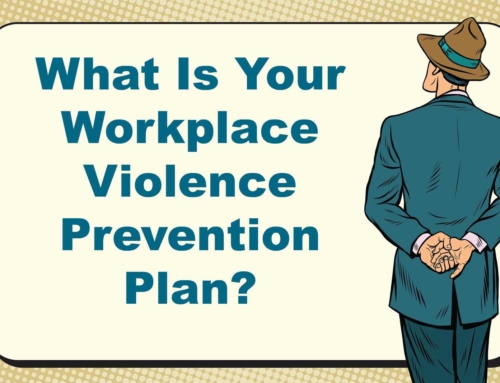Healthcare Workplace Violence – will throwing money at the problem really work this time?
Much has been written on the problem of Workplace Violence in the healthcare industry.
As far as the numbers tell us, healthcare gets the lion’s share of workplace violence incidents.
Statistically, that is what is reported but the Healthcare industry traditionally does an incredible job at tracking those incidents. However, not ALL incidents get reported so no one really knows exactly how bad the problem really is.
The trouble is that tracking those incidents that are reported does not seem to stop them.
In Ontario, Canada, a provincial group has been created, supported by the Ontario government, to examine the issue. Their mandate is that over the next three years, the group will examine ways to prevent violence against nurses in hospitals before moving on to other areas of the health-care sector.
Reported violent incidents in several Toronto-area hospitals have increased dramatically in the past three years with violent incidents in the University Health Network, including Toronto General and Toronto Western, doubling, from 166 to 331, between 2012 and 2014.
I wanted to share with you the types of violence that staff in healthcare deal with on a daily basis based on the four recognized and accepted sources of violence represented when we talk about Workplace Violence.
Four Workplace Violence Types
Type 1: External/Intrusive/Stranger Violence:
- Criminal intent by strangers
- Sabotage, mischief
- Protest violence
- Mental illness or drug-related aggression
- Random violence
Type 2: Consumer/Client Related Violence:
- Consumers / Clients / Patients (& their families) violence towards staff
- Vicarious trauma to staff
- Staff violence against clients / consumers etc.
Type 3: Staff Related Violence:
- Staff versus staff
- Aggressive bullying and intimidation
Type 4: Relationship Violence:
- Domestic violence
- Sexual harassment
Third party violence has also been identified and is also an aspect of workplace violence that needs to be addressed.
Third party violence occurs when others closest to the primary target/victim such as colleagues or family, witness or experience the aftermath of bullying and/or trauma of someone whom they have some type of relationship with.
Healthcare staff routinely undergo training to recognize the potential for situations to develop and the skills to then de-escalate the situation before things get out of hand.
It has been shown by study after study that early recognition and intervention are the best tools to resolve situations within the workplace with respect to aggression and hostility.
Ten Essential Verbal and Non-Verbal Techniques to Prevent Aggression
The following are 10 Essential Tips with respect to using verbal and non-verbal techniques in order to prevent and deescalate aggression and hostility:
1. Maintain calm
- Approach the person in a calm manner to engage
- Enlist active partnerships with the person
- Be respectful at all times
2. Provide the other person with appropriate personal space
3. Appear to be in control at all times but not controlling
4. Listen
- Avoid interruptions at first
- Avoid interpretation
5. Speak softly and avoid judgemental or provocative statements
- Brief is best- speak less and avoid over analyzing
- Utilize empathetic statements
6. Speak only to a sitting or prone client
- Communicate a desire to help
- Pay attention to them
- Relaxed and open postures and gestures
- We instead of ‘I’ or ‘You’
- Peace offerings: food or cold drinks
7. Avoid personalizing client’s negative behaviour
8. Never promise what you know you can’t deliver
- Failure to do so will haunt you you later on
9. Back off quickly and obtain assistance if necessary
- Do not be a hero
10 Limit setting
- Prudent use in a community setting where you do not have security or police back-up
- Utilize polite and respectful requests such as “please” and “thank you”
- Avoid using an authoritative stance
- Save face:
- Allow the client to save face if limits are being set
- Avoid angry or arrogant stances that will likely escalate things.
I’m sure the group that has been recently set up in Ontario will emerge with some excellent findings and recommendations.
In the meantime, let’s pay attention to what is going on around us and make sure we tell someone when an incident happens. After all, they can only do something about things if they actually know what’s really going on.
Remember: Make The Call!







Leave A Comment